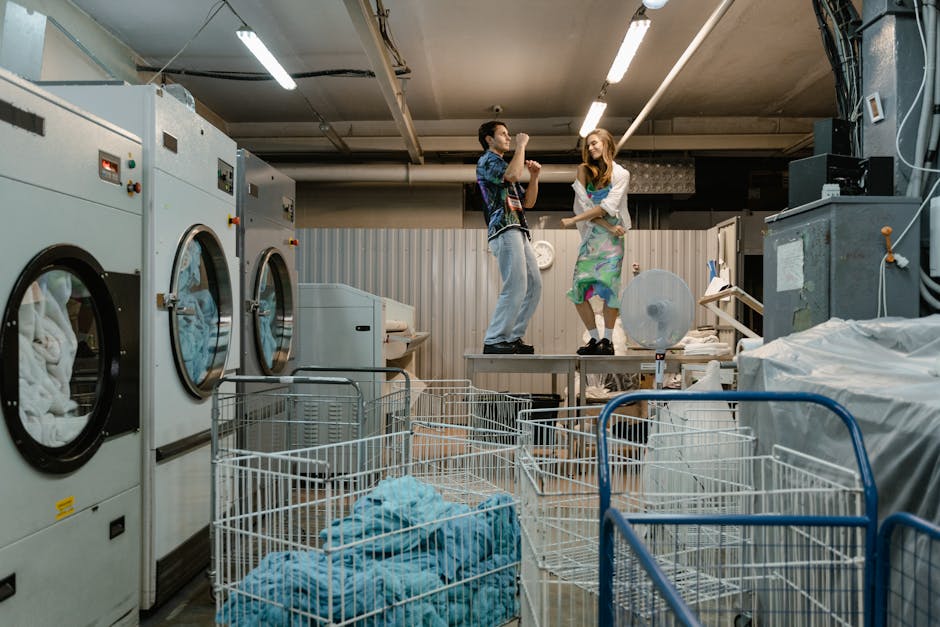The Evolution and Strategic Dynamics of the Laundromat Industry in 2025

The Evolution and Strategic Dynamics of the Laundromat Industry in 2025
In an era marked by rapid technological advancement and shifting consumer behaviors, the laundromat industry has not only persevered but evolved into a robust $6.8 billion sector. With a staggering success rate of 94–95% over five years, laundromats continue to represent a pivotal aspect of everyday urban life, particularly for renters and those living in densely populated areas.
Understanding Current Market Dynamics
Market Size and Stability: Despite a slight decline in the number of laundromat businesses, the overall revenue and stability of the sector remain high. This resilience is often attributed to the essential nature of laundry services, which continue to be in high demand across urban and suburban landscapes.
Demographic Dependence: The consistent demand is largely driven by high renter density and the absence of in-unit laundry facilities in many urban apartments. Regions exhibiting robust multi-family construction, significant immigrant populations, or substantial university presence tend to show higher laundromat patronage.
Emerging Trends and Technological Integration
Technological Upgrades: Modern laundromats are increasingly embracing cashless and app-based payment systems, which streamline operations and offer better audit trails. This shift not only enhances customer convenience but also aids in precise revenue tracking.
AI and Operations: Artificial intelligence is now being leveraged to predict maintenance needs and optimize business hours based on real-time traffic patterns. This technological infusion allows for smarter, more responsive operational strategies in the laundromat context.
Sustainability Focus: Eco-friendly machines and practices are becoming more prevalent, driven by both cost-efficiency motives and consumer preference for sustainable options. This trend is especially pronounced in environmentally-conscious urban areas.
Comparative Analysis: Past Versus Present
The laundromat industry of 2025 starkly contrasts with its earlier counterparts. Previously characterized by coin-operated, minimal-service facilities, today's laundromats are tech-savvy and customer-oriented. The introduction of subscription models, offering recurring revenue through membership services, marks a significant pivot from the traditional pay-per-use model, enhancing customer loyalty and business predictability.
As we look to the future, laundromats are not just about washing clothes; they are about providing reliable, convenient, and technologically advanced services that cater to the modern urban dweller.
Strategic Insights for Prospective Buyers
Due Diligence is Key: For those considering purchasing a laundromat, the thorough verification of foot traffic, revenue claims, and operational costs is imperative. Using industry benchmarks and local demographic data can aid in validating the potential success of an acquisition.
Location Analysis: Potential buyers must closely analyze the neighborhood demographics, presence of potential competitors, and overall accessibility of the location. Sites near transit hubs, universities, or large apartment complexes typically promise higher foot traffic and, subsequently, revenue.
Embrace Innovation: Adopting new technologies and sustainable practices can not only reduce operational costs but also attract a broader customer base, thereby increasing competitive edge in a densely populated market.
Final Reflections and Future Outlook
The laundromat industry's evolution reflects broader societal trends towards convenience, sustainability, and technological integration. As urbanization continues and technology becomes even more embedded in our daily lives, the role of laundromats in urban centers is likely to grow, not just as service providers, but as community staples that cater to a dynamic and diverse clientele.
In conclusion, the strategic importance of understanding and adapting to these shifts cannot be overstated for anyone looking to invest in or manage a laundromat moving forward. It is a sector ripe with opportunity, but only for those who approach it with meticulous research, innovative strategies, and an eye towards future trends.
